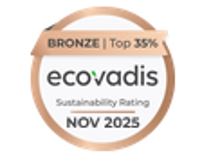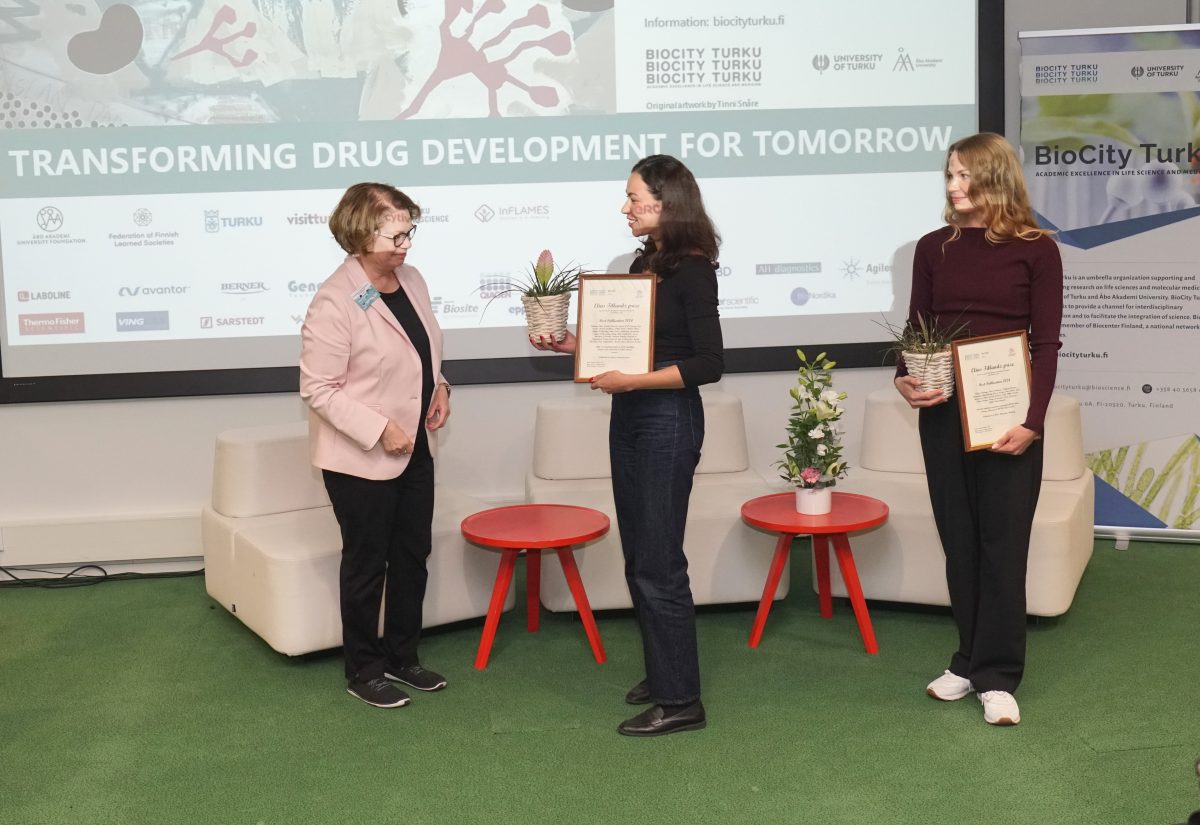-
Services
-
Warm thanks for the past year and for the good cooperation. With confidence, we look ahead to a new and innovative year in 2026.
This Christmas, instead of buying presents, we have made a donation to the Good Holiday Spirit Campaign, which brings joy to the holiday season of low-income families across Finland.
We wish you a Merry Christmas and a Happy New Year!
Team Laine IP

Sustainability, for us, starts with the people. It is more than a mere principle – it consists of the actions we make every day. We want to offer a workplace where everyone feels supported, respected, and able to grow. Taking care of our team, and encouraging open, honest communication, helps us build trust and a shared sense of purpose, both inside the company and with the clients and partners we work with.
We also believe that long-term success comes from finding a healthy balance between our operations, the well-being of our employees, and the impact we have on the planet. We have always tried to make thoughtful choices that reduce our environmental footprint and improve the way we work, step by step. At the same time, we have aimed at running a stable and responsible business that can support our people and our customers over the long term.
By bringing the well-being of our employees and the environment into our everyday decisions, we hope to create value that lasts—for our team, our clients, and our community.
To help us with these targets, we began using Ecovadis a little bit more than a year ago. After learning how to use this sustainability rating system in a way that suits us, we have now obtained a Sustainability report, and an Ecovadis Bronze medal, that we feel very proud of.
More information from our Green Office team: go@laineip.fi or Kathy Wasström: kathy.wasstrom@laineip.fi

It is time to summarise the results of the 2025 Managing Intellectual Property (MIP) rankings for Laine IP Oy. The year 2025 has been the most successful in our firm’s history.
The following experienced professionals at Laine IP received individual MIP Star recognitions:
In addition, MIP acknowledged the following experts with a Rising Star distinction:
The Rising Star recognition is awarded to emerging top professionals who have demonstrated exceptional expertise and dedication in the field of intellectual property.

We are especially proud that Kathy Wasström was named Practitioner of the Year 2025.
In addition to the individual recognitions, Laine IP Oy was awarded Trademark Firm of the Year for the second consecutive year.
Laine IP also retained its top-tier rankings in the firm-level categories for both Patent Prosecution and Trademark Prosecution.
Managing Intellectual Property’s IP Stars research is the most comprehensive and influential analysis of the global IP profession, evaluating leading IP practitioners across more than 70 countries. The research is based on extensive market analysis, client feedback, and peer reviews, assessing both the volume and the quality of work handled by each firm.
We would like to express our sincere gratitude to our clients for their trust, continued collaboration, and valuable feedback in industry surveys. Competition in our field is intense, and your feedback is essential in helping us continue to improve our services. These recognitions reflect our commitment to high-level expertise and personalised service—values that guide our work every day. These honours are a testament to our collective effort and to our mission: helping you protect and develop your innovations, enabling your business to thrive.
On October 27, 2025, the USPTO introduced a new Streamlined Claim Set Pilot Program (“Program”). The Program offers a faster first Office action for applications that present only 1 independent claim and no more than 10 total claims.
The purpose of the Program is to help address the significant backlog of unexamined and pending US nonprovisional patent applications. Currently, the first Office action pendency (average number of months from application filing date to the date a first Office action) stands at 22.6 months.[1] By participating, US patent applicants may benefit from expedited review while contributing to the USPTO’s broader effort to reduce inventory, shorten pendency, and gather data for future reforms. Here are the main highlights of the program:
a. Type of Application:
b. Claim Limits:
If you have any interest or questions about the USPTO Streamlined Claim Set Pilot Program, please do not hesitate to contact a member of our US IP Team.
[1] https://www.uspto.gov/dashboard/patents/pendency.html
In July, the Enlarged Board of Appeal of the European Patent Office gave decision G1/23 relating to the prior art status of a commercially available product, the structure or composition of which is not necessarily possible to analyse or reproduce.
The decision closely relates to an earlier decision G1/92, according to which the chemical composition of a product is part of the state of the art, if the product as such is available to the public and the person skilled in the art can analyse and reproduce it, irrespective of whether the skilled person has any reason to do so.
The following questions were asked of the Enlarged Board of Appeal.
1. Is a product put on the market before the date of filing of a European patent application to be excluded from the state of the art within the meaning of Article 54(2) EPC for the sole reason that its composition or internal structure could not be analysed and reproduced without undue burden by the skilled person before that date?
2. If the answer to question 1 is no, is technical information about said product which was made available to the public before the filing date (e.g. by publication of technical brochure, non-patent or patent literature) state of the art within the meaning of Article 54(2) EPC, irrespective of whether the composition or internal structure of the product could be analysed and reproduced without undue burden by the skilled person before that date?
3. If the answer to question 1 is yes or the answer to question 2 is no, which criteria are to be applied in order to determine whether or not the composition or internal structure of the product could be analysed and reproduced without undue burden within the meaning of opinion G 1/92? In particular, is it required that the composition and internal structure of the product be fully analysable and identically reproducible?”
The earlier decision G1/92 confirmed that properties of a product are part of the state of the art, even if the skilled person does not have any reason to analyse these properties. According to this decision, the product put on the market must also be reproducible, in order to be part of the state of the art.
Decisions of the Boards of Appeal have used two different interpretations of this decision, and thus, a clarification of this point was asked for, among other questions.
In the decision G1/23, the Enlarged Board if Appeal reformulated the first question asked to read: is the not analysable and reproducible (i.e. that cannot be manufactured) product excluded from the prior art per se, or whether G 1/92 only means that while the composition of the product did not become part of state of the art, the product itself does still belong to the state of the art? In the latter case, also features that are themselves analysable and reproducible, are part of the state of the art.
Concerning the other parts of the first question, the Enlarged Board of Appeal states that there is no need to separately assess the analysis and reproduction of the product, and that a product put on the market comprises both natural products and manufactured products. The Board did also not take a stance on the question of what is ”undue burden”, other than stating that there is no undue burden if the person skilled in the art can analyse and reproduce the product or its composition, based on their general knowledge.
The reasons (r.2.2.4) discuss at more length what is reproduction (i.e. for example manufacturing) in decision G1/92. According to G1/23, in the earlier decision reproduction clearly means manufacturing, and not only obtaining the product from the market, and this was meant also in the question asked.
A major part of the reasons of the decision focuses on this question, and the decision does state that answering this question is sufficient for answering the whole referral.
A first alternative is that a product brought on the market is not part of the state of the art, if it is not possible to reproduce it. According to the Enlarged Board, this is an absurd interpretation, as then nothing that is available in the nature would be part of the state of the art. Indeed, in reality, almost all existing products are based on natural products, such as compounds, atoms and materials.
According to a second alternative, only the composition of a product that is not reproducible is not part of the state of the art. The Board however found a difficulty in using this alternative in that it would mean that an existing property of a product would not exist. In reality, products have for example physical properties that exist, even though they are not published. Similarly, products have a chemical composition, that exist even though it has not been analysed and determined. Additionally, a skilled person would, when searching a new solution to a problem, typically first use existing products, the properties of which are known, even if they would not know their exact composition. Therefore, using this second alternative would also lead to an absurd end result.
According to the Enlarged Board, the correct interpretation of reproduction in decision G1/92 does thus also include the option where the product is obtained from the market. Therefore, the requirement of reproducibility in decision G1/92 is obsolete, as all commercially available products fulfil the requirement of reproducibility.
The Enlarged Board answered question 1 as follows. A product put on the market cannot be excluded from the state of the art merely because its composition or internal structure cannot be analysed and reproduced. In this answer, one must keep in mind that reproduction includes buying the product from the market.
The answer remains the same, even if the product is later no longer available on the market. In practice it may well be that it would be more difficult to prove what was made public, but similarly to for example public webpages (or webpages that have been public) that cannot be removed from the state of the art, now or previously commercially available product cannot be removed from the state of the art. If the product changes, the new product becomes part of the state of the art at the moment it is made available to the public.
In the assessment of inventive step, the step of assessing whether a skilled person would have used the product to solve a technical problem, it is also possible to take into account whether an important property of a product would have been reproducible.
The decision also reminds us that the fact that a non-reproducible product is part of the state of the art does not necessarily mean that such product or its features need to be taken into account when assessing novelty or inventive step (r.93).
The Enlarged Board answered the second question, relating to the technical information published before the filing date of the application, as expected, by stating that such information is part of the state of the art. It is not relevant whether the skilled person is able to analyse and reproduce the product and its composition and internal structure.
The third question was not answered, following the answers to the first two questions, as it was no longer relevant.
I. A product put on the market before the date of filing of a European patent application cannot be excluded from the state of the art within the meaning of Article 54(2) EPC for the sole reason that its composition or internal structure could not be analysed and reproduced by the skilled person before that date.
II. Technical information about such a product which was made available to the public before the filing date forms part of the state of the art within the meaning of Article 54(2) EPC, irrespective of whether the skilled person could analyse and reproduce the product and its composition or internal structure before that date.
Read more: https://www.epo.org/en/boards-of-appeal/decisions/g230001ex1
The services of Laine are now available also in Satakunta, when a small office is opened in Pori on 15.10.2025. European patent attorney Kaisa Suominen will be present in the office mainly from Monday to Thursday, and if need be, the services of experts in other forms of protection are also available. Kaisa is happy to have an office at her home region:
“Last summer it was time for me to move back to my home region, after several decades. It is great that Laine also wishes to open an office there, and my aim is to start a serious campaign to entice colleagues to join me in Pori.”
The new office in Pori is located at the heart of the city, next to the market square at the address Yrjönkatu 10 C L2, 28100 Pori (Linnakortteli).
Contact Kaisa: kaisa.suominen@laineip.fi, +358504306570
Last year, a re-referral was presented to the Enlargerd Board of Appeal on whether an intervener that joins the proceedings only at the appeal stage can continue the appeal proceedings on their own, after all original appellants withdraw their appeals. In particular it was asked, whether the third party may acquire an appellant status corresponding to the status of a person entitled to appeal within the meaning of Article 107, first sentence, EPC.
A previous decision G3/04 had been issued, according to which if all appellants withdraw their appeal, the appeal proceedings are terminated.
The Enlarged Board of Appeal did not find any reason to change the previous decision, as the articles of the EPC on which the decision was based have not been changed in the meantime. Thus, the situation is still that the status of a party that intervenes only during the appeal proceedings is different from the status of the parties that have been party to the proceedings already at the first instance, and they cannot continue the appeal proceedings in a situation where all appeals are withdrawn.
The Elias Tillandz Prize is awarded annually for the best research article by researchers from BioCity Turku, and this year, the prize was shared by two research articles. Before joining the chemistry team at Laine IP, Jasmin conducted research in the research group led by Johanna Ivaska.
The award-winning research demonstrates how the removal of the SHANK3 protein causes an overdose in cellular communication regulating growth and division, leading to the death of KRAS-mutated cancer cells. KRAS mutations account for over 20% of all cancer types and are notoriously difficult cancers to treat. The research utilizes, among other things, nanobodies that can be used as drugs.

Heräsikö kysyttävää? Laine IP:n kemian tiimin asiantuntijat auttavat sinua mielellään mm. lääkkeisiin, terapeuttisiin ja diagnostisiin liittyvissä IPR-asioissa.
Tutustu Jasminin artikkeliin täältä
Lue lisää Elias Tillandz -palkinnosta täältä
A new referral has been submitted to the Enlarged Board of Appeal (EBoA) of the EPO concerning adaptation of the description to correspond to amended claims. This was indeed to be expected, following the recent decision G1/24 (see our news item on decision G1/24 here), as according to this decision, the description is always to be used for interpretation of the claims.
In the decision T397/22 which is the basis for this referral, the adaption of the description became relevant in a situation where the opposition division had accepted into the proceedings a new auxiliary set of claims that was filed during oral proceedings. Also the board of appeal was of the opinion that the decision to accept the set of claims into the proceedings was correct, and thus this set of claims was also part of the appeal proceedings.
The patentee had filed also an amended description during the opposition proceedings. The opponent submitted that the description was however in conflict with the amended claims, i.e. contradicting Article 84 EPC. Article 84 EPC says, i.a., that the claims must be supported by the description. In the present case, claim 1 had been limited with respect to a certain feature, making it a mandatory feature, while in the amended description, this feature was still presented as optional. The board of appel agreed with the opponent, i.e. that there was an inconsistency between the claims and the description.
According to the board of appeal, if such an inconsistency between amended claims and the description is contrary to Article 84 EPC, the conclusion is that the amended set of claims and the amended description are not allowable. In the opposite case, they are allowable.
Thereafter, the board of appeal researched previous decisions of boards of appeal on this question, and concluded that they were divided in two groups. The decisions consulted included also decisions on appeals from application proceedings. A majority of the decisions concluded that it was necessary to adapt the description to correspond to amended claims. In these decisions, there were however five different lines of arguments as to the legal basis in the EPC and its Implementing provisions. A minority of the decisions which arrived at a conclusion that there is no need for such an adaption were all recent and taken in examination appeals. There exists thus a basis for the referral, due to the diverging case law.
The referral asks the following questions.
An affirmative answer to the above questions would have a significant impact on prosecution. If the decision was affirmative and the EPO would adopt a strict view on the issue, the patentee would need to ensure that every time they file an amended set of claims, they would also file a correspondingly amended description. Correspondingly, an applicant should, at the latest at the grant phase, ensure that the description corresponds to the claims, if amended during prosecution of the application.
Otherwise, it is possible that a board of appeal would decide that a lack of adapted description is something that can no longer be corrected in appeal proceedings, unless it is done immediately when filing the first brief (grounds of appeal or reply to appeal). A board that applies the rules of procedure of the boards of appeal strictly can even decide that if the amended set of claims was already pending in the first instance proceedings, filing of a correspondingly amended description only during appeal is too late and thus not allowed.
This is what actually happened in the case at hand. Before the oral proceedings in front of the boards of appeal, the patentee was of the opinion that it was not necessary to further adapt the description, in order to make it correspond to the set of claims in question, even though there was an inconsistency between the description and the claims. During oral proceedings, the patentee however submitted a new, amended description that corresponded to the amended set of claims.
The opponent argued that this adapted description should not be admitted into the proceedings as being late filed. Additionally, the opponent submitted that the amended description constituted an amendment of the patentee’s case and it should not be admitted into the proceedings also on this ground. The board of appeal agreed with this latter view, and did thus not admit the amended description into the proceedings.
Should the decision be affirmative, it is possible that it is applied also retroactively, at least in boards of appeal. It might thus be wise to take this referral into account also in pending opposition proceedings.
On the other hand, a local division of the Unified Patent Court (UPC) has in April 2025 handled a case, in which the UPC decided that the claims limited during prosecution of the application and the description were not in line with each other. According to the UPC, this is not allowed, and the patentee was not allowed to refer to the description and to try to expand the scope of protection of the claims in this manner. The patent was however held in force in the granted form, despite this inconsistency between the claims and the description, i.e. this kind of unallowed issue did not invalidate the patent. Should this become the general view of the UPC, it is comforting for the patentee to know that even if the EPO changes their view in that the description must be adapted to the amended claims, this would not have an effect of the validity of the patent, at least not retroactively and in front of the UPC.
In my opinion a decision stating that the description does not need to be adapted to amended claims would be in contradiction with the recent decision G1/24.
Personally, I hope that the EBoA decides that adaptation is necessary. One can of course argue many ways on this issue, but the situation in infringement proceedings would be clearer, if the patentee could not refer to the description to try and expand the scope of protection from to what it was previously limited to. A description adapted to amended claims would thus also increase third parties’ legal certainty.
Within a year we will most probably know the view of the EBoA on this question.
Related links:
G1/25: https://www.epo.org/en/case-law-appeals/communications/referral-enlarged-board-appeal
G1/24: https://www.epo.org/en/boards-of-appeal/decisions/g240001ex1
T697/22: https://www.epo.org/en/boards-of-appeal/decisions/t220697ex1
Managing Intellectual Property, the leading publication in the IPR sector, has published the results of its survey for the previous year. Laine IP has received a new MIP STAR, with our lawyer Tom-Erik Hagelberg receiving a MIP STAR mention for his trademark work.


In total, 9 Laine IP experts have received the MIP STAR award. Others include Tatu Ahlskog and Kathy Wasström for patent work, and Tom-Erik Hagelberg, Reijo Kokko, Jemina Koskela and Joose Kilpimaa for trademark work.
In addition to the MIP STAR awards, Tiia-Riikka Kittilä, Liisa Sarnes Salokoski and Joni Vehmas have been awarded the “Rising Star” award.
We are particularly proud that Kathy Wasström has been selected for the “Top 250 Women in IP” list in addition to the MIP STAR award.


At the corporate level, we are at the highest “Tier 1” level in both the patent and trademark categories. You can find the rankings here.
These rankings are very important to us, as they are based on ratings from clients and peers. Already a quarter of our experts are included in the MIP STAR ranking, and at the firm level we have maintained the highest level.
A big thank you for all this goes to our clients and colleagues around the world who have contributed to the survey by commenting on our work. Our success in this important survey motivates us to keep improving, and we will do our part to support our clients in their success.